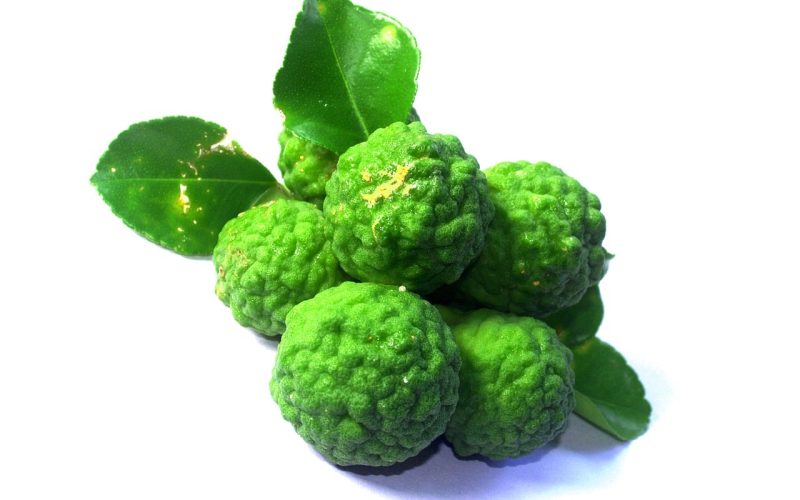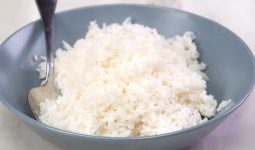Are you out of Kaffir lime leaves and don’t know what to substitute them with? Don’t worry; there are plenty of ways to replace this key ingredient in your dish.
That’s why we created this article on the best substitutes for Kaffir lime leaves, just for you!
Kaffir lime leaves are an important part of many recipes. Their unique flavor adds a dimension to food that can be hard to replicate with other ingredients.
The good news is, while they may be hard to find fresh in some parts of the world, you can easily find them dried or frozen.
But even if that’s not an option for you, there are still plenty of viable substitutes for kaffir lime leaves.
If you’re looking for alternatives to Kaffir lime leaves, here’s a list of substitutes for that perfect flavor in your dish.
Best Substitutes for Kaffir Lime Leaves
1. Lemon Balm
Lemon balm is the first on this list of substitutes for kaffir lime leaves in many recipes.
It has a very similar appearance and texture when cooked, providing a pleasantly tangy flavor that is ideal for Thai cuisine.
The lemony notes of lemon balm pair well with ingredients such as chili peppers, garlic, ginger, and fish sauce to create dishes full of depth and unique flavors.
Lemon balm can also be used fresh or frozen, just like kaffir lime leaves, offering versatility in authentic pad thai or green curry.
Furthermore, due to its availability worldwide, lemon balm is accessible and easy to find even in regions where kaffir lime leaves are unavailable.
2. Lemon Verbena
Lemon Verbena is one of the great substitutes for Kaffir Lime Leaves as it has a strong citrus flavor with hints of lemon and tropical notes.
It is widely used in Mexican, Peruvian, and other Latin American cuisines.
It is milder than its Kaffir lime leaf counterpart, so it won’t overpower dishes but adds a nice flavor that compliments many dishes.
One advantage to arguing Lemon Verbena instead of Kaffir lime leaves is that they are easier to find in stores and online.
Additionally, because the leaves are larger, they are easier to remove from dishes before serving them on the table.
Lemon verbena will work well in many recipes where kaffir lime leaves are called for, such as curries, soups, marinades, sauces, salads, and even beverages, as long as its strong flavor can be balanced with other ingredients.
Unlike dried kaffir lime leaves which have to be rehydrated before use, fresh lemon verbena can be added directly like any other herb or spice used in cooking.
3. Lemongrass
When we are talking about the various substitutes for Kaffir lime leaves, Lemongrass is not left out, as they have a similar flavor profile with its citrus zest and lemony scent.
The difference is that kaffir lime leaves are much more fragrant than lemongrass.
The latter has a milder, sweet flavor, making it ideal for curries and soups or as an herb in salads and sauces.
When substituting lemongrass for kaffir lime leaves in recipes, you should use about half the amount of the original recipe since it’s not as intense in flavor.
Lemongrass also pairs well with pork, fish, chicken, and vegetable dishes, so you can add depth of flavor without overpowering the dish.
4. Mint
Mint is an excellent substitute for Kaffir Lime Leaves and can be used to infuse dishes with a refreshing, fragrant flavor.
Mint contains menthol and menthone, which gives it its distinct aroma and taste, and while these chemicals may slightly vary from those contained in the Kaffir lime leaves, they still provide a similar effect.
In addition, due to mint’s versatility, it can also be used in recipes that call for more than just Kaffir lime leaf-infused sauces, such as Thai salads, fish curries, and stir-fried dishes.
Fresh mint is always recommended for best results, but dried alternatives are surprisingly just as effective and are available in most grocery stores.
Mint is certainly not an ingredient that can entirely replace Kaffir lime leaves, but it does provide a nice alternative if you happen to be in a pinch or don’t have access to them locally.
There’s another one of the different substitutes for Kaffir lime leaves!
5. Orange Peels
Orange peels are excellent substitutes for Kaffir lime leaves in Asian cuisine.
The peel of the orange has a citrusy essence that mimics the aroma and taste of kaffir lime leaves while providing a unique twist on dishes.
This substitute works particularly well with curries, soups, and other braised or lightly cooked in coconut milk.
Orange peels add a subtle sweetness to savory dishes, which helps to balance out their flavor and make them more enjoyable.
Additionally, orange peels can be used as a garnish for salads and added to some marinades for an extra citrusy sweetness.
Orange peel is also easier to find than kaffir lime leaves and is more widely available in many grocery stores, so it’s a great alternative if you don’t have access to fresh or frozen kaffir lime leaves.
6. Lime Zest
Lime zest can be used as an effective substitute for kaffir lime leaves in many dishes.
The zest contains much of the same flavor as the leaves without the bitterness common to this citrus family.
Finely grated zest can be added to soups, curries, and stir-fries near the end of cooking, while more robust strips are perfect for use as a garnish.
The aroma is intense, and both fresh and dried versions should be used sparingly until you get a feel for how a particular recipe requires its use.
Lime zest has other culinary uses, such as giving cooked fish, fruity sauces, and creamy dressings a pleasantly tangy taste.
If you are willing to give the substitutes for Kaffir lime leaves a try, start with lime zest!
7. Lime Juice
Lime juice is a great substitute for kaffir lime leaves if you want to add a zesty lemon flavor to your dish without having the hassle of finding or buying fresh kaffir lime leaves.
Lime juice contains citric acid, which provides a tart and tangy taste, as well as nutrients like Vitamin C and fiber to help digestion.
This makes it an ideal replacement for dishes that call for kaffir lime leaves, such as Thai curries, soups, stews, salads, marinades, and even cocktails.
The best way to ensure that your dish gets the desired tartness without becoming too overwhelming is to use fresh lime juice instead of bottled or concentrated varieties.
As with most substitutes for Kaffir lime leaves, it’s always a good idea to start by adding less than the recipe calls for initially.
This is so that you can adjust the flavor profile as needed until you have achieved your desired result.
8. Bay Leaves
Bay leaves are often used as substitutes for kaffir lime leaves because they have similar flavor profiles.
Kaffir limes contain a unique citrusy flavor, while bay leaves offer more of an earthy and slightly sweet taste.
When used as a substitute, bay leaves should be added at the beginning of cooking so that their flavor can infuse throughout the recipe.
Bay leaves are better when fresh — dried bay leaves can taste bitter and not offer much flavor.
Add 2-3 whole bay leaves to your dish instead of just one to get the most out of your substitute.
However, it’s important to remember that bay leaf substitutes cannot compare to the unique aroma and flavor of kaffir lime leaves.
So if you’re looking for an authentic culinary experience, it might be best to seek out kaffir lime leaves.
9. Curry Leaves
Curry leaves are also excellent substitutes for kaffir lime leaves in cooking, offering a similar flavor and aroma.
They can be used interchangeably when making Thai and Southeast Asian dishes but cannot replace the zesty acidity of kaffir lime leaves.
However, curry leaves have a more potent flavor than their counterpart, so it is suggested to use half the amount called for in recipes that call for kaffir lime leaves.
Furthermore, curry leaves contain many health benefits, as they are rich in nutrients such as vitamin C, protein, calcium, and iron.
By using curry leaves instead of kaffir lime leaves when possible, cooks can enjoy great-tasting food with added nutritional benefits.
10. Lemon Thyme
Lemon Thyme is the last on the list of substitutes for kaffir lime leaves, as it has a similar citrusy and lemony flavor that pairs nicely with many dishes.
It is also a good option for those who are sensitive to the strong flavor and fragrance of kaffir lime leaves or don’t have access to them.
Lemon thyme can be added to sauces, curries, soups, salads, and marinades to boost tart and tangy flavor.
To substitute kaffir lime leaves with lemon thyme, use approximately double the amount of fresh lemon thyme compared to fresh kaffir lime leaves, or reduce the amount if using dried thyme.
Lemon thyme also works well when combined with other herbs, such as parsley and oregano, to create a more complex herbal flavor in dishes.
Conclusion
In conclusion, while Kaffir lime leaves are an essential ingredient in many Southeast Asian dishes, they can be substituted with other similarly flavored ingredients such as lemon or lime zest, lemongrass, and bay leaves.
Other substitutes for Kaffir lime leaves are various herbs, such as mint and basil or other citrus fruits with a more acidic flavor, such as grapefruit.
Each of these alternatives carries its unique flavor profile and will provide a different taste when used as substitutes for Kaffir lime leaves.
It comes down to personal preference when deciding which substitute to use.
Still, no matter which option is selected, there will surely be an interesting and flavorful result!
Frequently Asked Questions
Kaffir lime leaves can be purchased fresh or dried at your local Asian market or online. Look for fresh lime leaves that are brilliant green and have a strong, zesty fragrance. The dried leaves should be brittle and dark green.
Yes, you may freeze kaffir lime leaves. Place the leaves in a plastic bag in the freezer. When ready to use them, take as many as you need and let them thaw.








